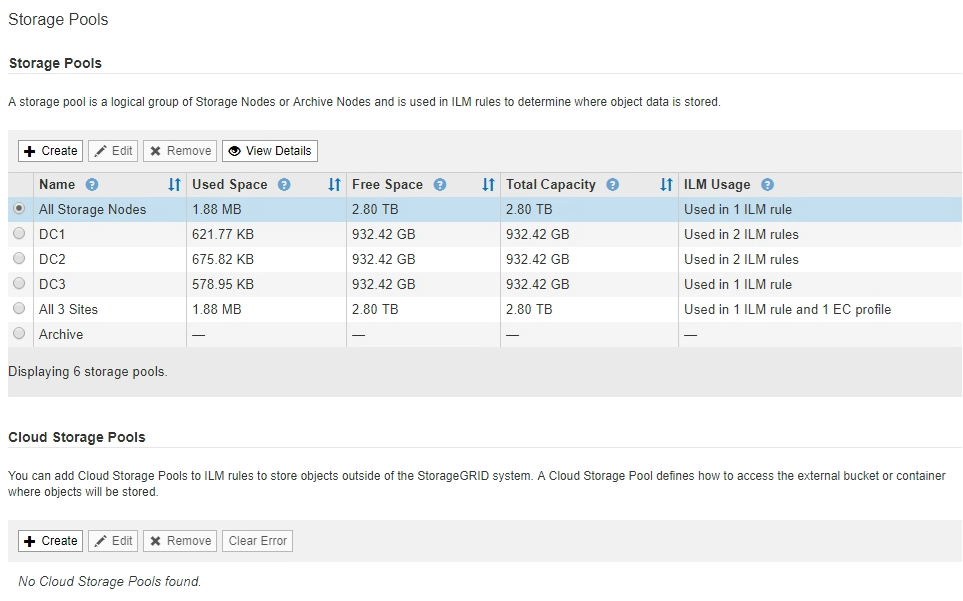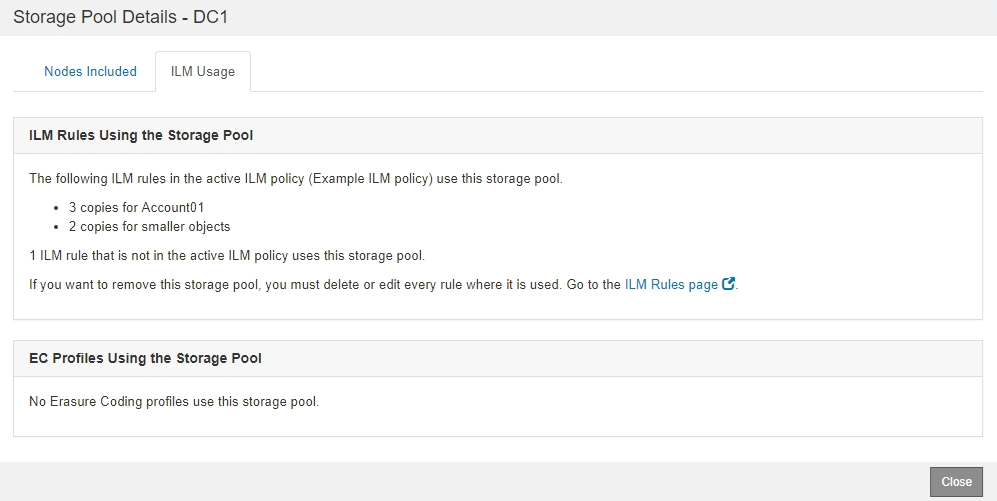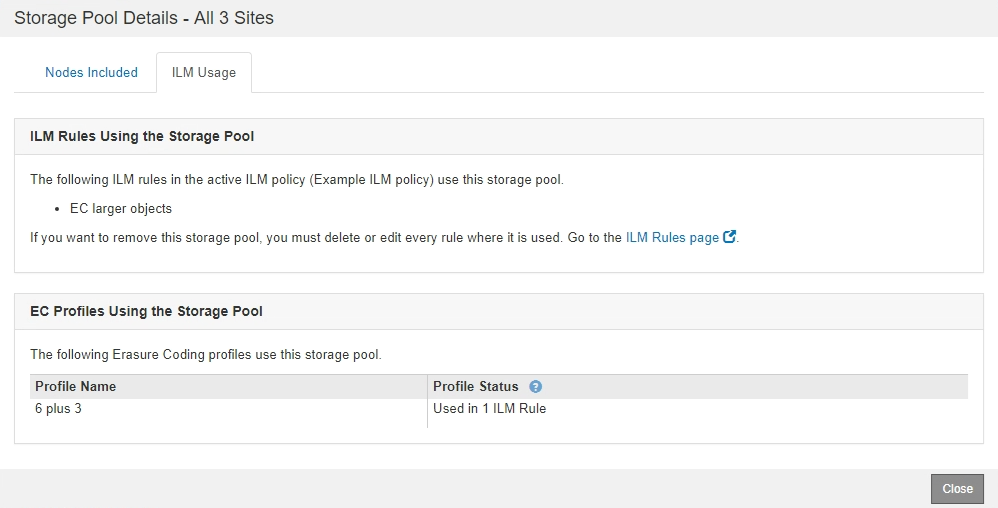Viewing storage pool details
 Suggest changes
Suggest changes


You can view the details of a storage pool to determine where the storage pool is used and to see which nodes and storage grades are included.
-
You must be signed in to the Grid Manager using a supported browser.
-
You must have specific access permissions.
-
Select ILM > Storage Pools.
The Storage Pools page appears. This page lists all defined storage pools.

The table includes the following information for each storage pool that includes Storage Nodes:
-
Name: The unique display name of the storage pool.
-
Used Space: The amount of space that is currently being used to store objects in the storage pool.
-
Free Space: The amount of space that remains available to store objects in the storage pool.
-
Total Capacity: The size of the storage pool, which equals the total amount of usable space for object data for all nodes in the storage pool .
-
ILM Usage: How the storage pool is currently being used. A storage pool might be unused or it might be used in one or more ILM rules, Erasure Coding profiles, or both.
You cannot remove a storage pool if it is being used.
-
-
To view details about a specific storage pool, select its radio button and select View Details.
The Storage Pool Details modal appears.
-
View the Nodes Included tab to learn about the Storage Nodes or Archive Nodes included in the storage pool.

The table includes the following information for each node:
-
Node Name
-
Site Name
-
Used (%): For Storage Nodes, the percentage of the total usable space for object data that has been used. This value does not include object metadata.
The same Used (%) value is also shown in the Storage Used - Object Data chart for each Storage Node (select Nodes > Storage Node > Storage).
-
-
Select the ILM Usage tab to determine if the storage pool is currently being used in any ILM rules or Erasure Coding profiles.
In this example, the DC1 storage pool is used in three ILM rules: two rules that are in the active ILM policy and one rule that is not in the active policy.

You cannot remove a storage pool if it is used in an ILM rule. In this example, the All 3 Sites storage pool is used in an Erasure Coding profile. In turn, that Erasure Coding profile is used by one ILM rule in the active ILM policy.

You cannot remove a storage pool if it is used in an Erasure Coding profile. -
Optionally, go to the ILM Rules page to learn about and manage any rules that use the storage pool.
See the instructions for working with ILM rules.
-
When you are done viewing storage pool details, select Close.



